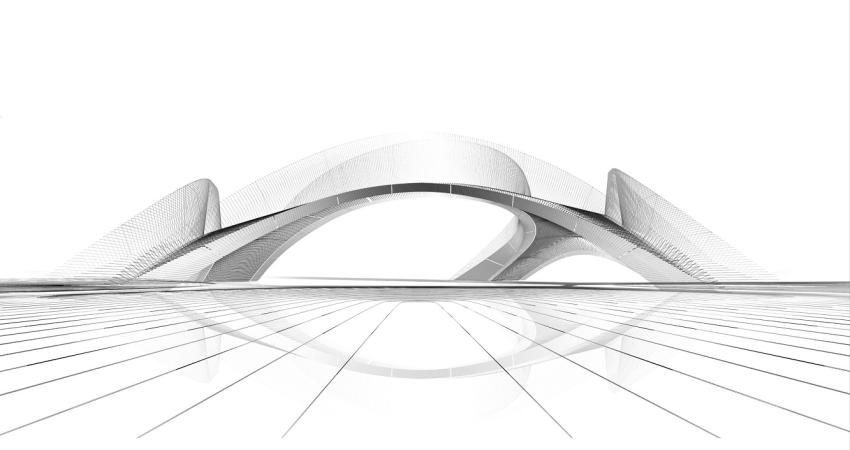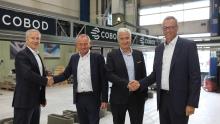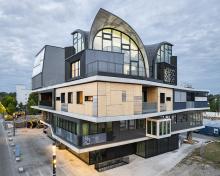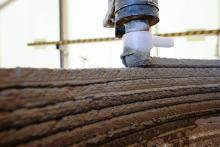
The bridge is now open to the public in the Marinaressa Gardens during the Architecture Biennale being held in the Italian city until November 2021.
The project partners say that Striatus establishes a new language for concrete that is digital, environmentally advanced and circular by design. The bridge holds together through compression with no reinforcements, applying computational design and 3D printing, for minimal material use and maximum strength.
It was designed by Block Research Group and Zaha Hadid Architects, in collaboration with incremental3D and building materials giant Holcim.
Philippe Block, co-director of the Block Research Group at ETH Zurich, says: “The name 'Striatus' reflects the bridge’s structural logic and fabrication process. In arched and vaulted structures, material is placed such that forces can travel to the supports in pure compression. Strength is created through geometry, using a fraction of the materials used in conventional concrete beams."
Block adds that the technology used in the project opens a range of opportunities to build with lower-strength and in a more ecologically friendly way.
Jan Jenisch, CEO of Holcim, commented: “Striatus was designed by some of the best architectural and creative minds in their fields. It demonstrates the infinite possibilities of 3D Concrete Printing to enable more sustainable, faster and effective building structures, without compromise on aesthetics and functionality. Its digital and circular design uses concrete at its best, with minimal material use and blocks that can be repeatedly reassembled and infinitely recycled.”
Striatus is a complex structure made possible by a specific, custom-made ink, from Holcim’s TectorPrint range, developed by its 3D Concrete Printing research team.
Holcim says it sets a blueprint to build for the future using advanced technologies from computational design to 3D Concrete Printing. It adds that the next generation of inks can include Holcim’s green building solutions, from its ECOPact green concrete to its ECOPlanet green cement, including recycled construction and demolition waste.
Holcim is working on a range of 3D Concrete Printing applications, from complex infrastructure to affordable housing. In Malawi, the company launched what is says is the world’s-first 3D concrete printed school, taking only 18 hours to build the walls and using 70% less materials than traditional building techniques. Holcim is also working with GE Renewable Energy and COBOD to 3D concrete print taller wind turbine towers on-site, doubling their height to harness stronger winds and capture 33% more renewable electricity at lower cost.










